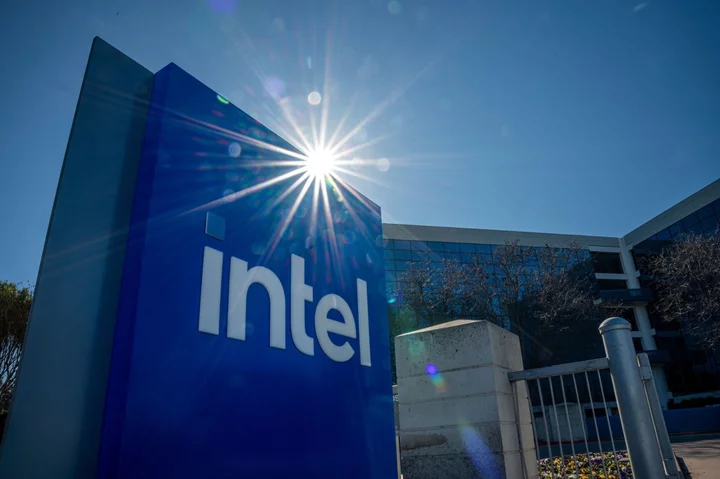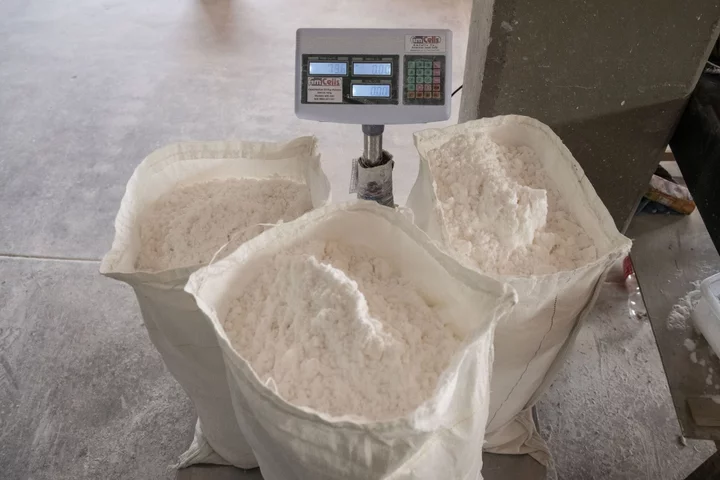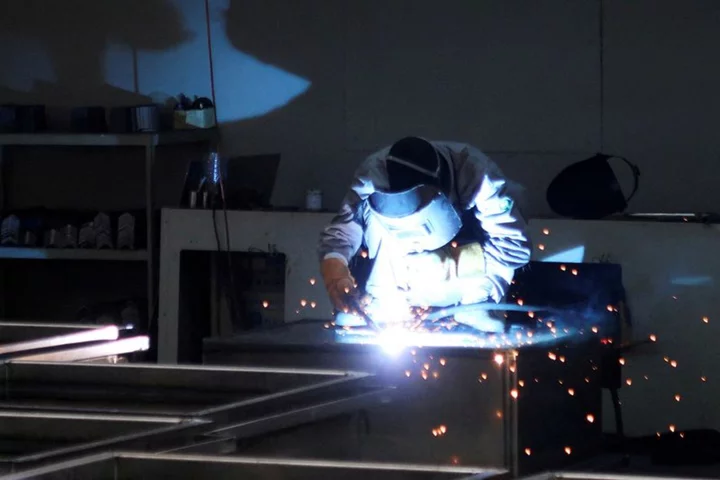Intel Corp. shares surged after the chipmaker declared an end to the personal computer slump and said the second half of the year will show that its long-awaited comeback is underway.
The beleaguered chip pioneer reported a surprising profit in the second quarter and gave a bullish sales forecast for the current period that topped analysts’ estimates, sending shares up about 8% in extended trading.
The outlook suggests Intel has turned a corner after sluggish demand for personal computer chips battered its business. Chief Executive Officer Pat Gelsinger said that inventory of PC components is now back to normal levels, prompting customers to resume orders. He expects a sustained recovery in the second half of the year for that side of his company.
The server part of Intel’s operations isn’t recovering as quickly as hoped, Gelsinger said. Sluggishness in China and weaker-than-expected demand at some cloud and corporate customers are weighing on the division, he said. While that slump will linger into the third quarter, he expects a recovery in the last three months of the year.
Management had previously promised that the second half of the year would show improvement, and now investors are seeing fresh evidence of that. Minus certain items, Intel expects to post earnings of 20 cents a share in the current quarter, compared with a 13-cent profit projection.
Sales in the third quarter will be as much as $13.9 billion, compared with an average analyst estimate of $13.3 billion. Intel’s shares rose more than 8% in late trading after the report was released, marking the second straight post-earnings rally for the chipmaker.
But the company remains in the early stages of a turnaround, which hinges on reestablishing Intel’s once-bulletproof lead in chip technology. Gelsinger said Intel is on course or slightly ahead of plans to adopt new manufacturing advances — an effort to regain its technological leadership by 2025.
Though Intel stock has gained 31% this year through Thursday’s close, that underperformed a rally by chip-related shares. The Philadelphia Stock Exchange Semiconductor Index is up 49% in 2023.
Intel predicted that its gross margin — the portion of sales remaining after deducting the cost of production — would be 43% in the third quarter. That compares with an estimate of just under 41%. The company, one of the few in the industry that doesn’t outsource production, has been running its plants at less than full capacity. That’s helped reduce the amount of supply in a market where customers already had too much inventory.
Charges associated with that “underloading” of factories are now easing, though they will linger for multiple quarters, said Chief Financial Officer Dave Zinsner.
In the second quarter, Intel reported a surprise profit of 13 cents a share, excluding some items. That compared with a loss of 4 cents predicted by analysts. Revenue fell 15% to $12.9 billion, but that beat the projection of about $12 billion.
Client computing, Intel’s PC chip business, generated $6.78 billion in revenue last quarter. That compared with an estimate of $6.1 billion. Data-center sales were $4 billion, versus an average projection of $3.82 billion.
Still, Intel remains far from its heyday. The company had quarterly sales of more than $20 billion as recently as 2021.
Read More: Intel’s Bull Case Is That Things Can’t Get Worse
The company’s factory network, once the envy of the chip business, is crucial to whether Intel can regain its dominance. In addition to whipping them into shape, Gelsinger has promised he will open those facilities up for rivals to use on a contract basis. In the meantime, the costly push to catch up with industry leader Taiwan Semiconductor Manufacturing Co. is weighing on profit.
Intel’s margins remain nowhere near the 60% level that it maintained for years, when it had dominant market share and productive factories. Chipmaking technology advances allow companies to improve their economics and let chips handle ever-increasing amounts of information.
Investors have yet to fully buy into Gelsinger’s turnaround plan. Rivals such as Nvidia Corp. and Advanced Micro Devices Inc. have seen their stocks surge more dramatically, helped by the rush to use their chips in new artificial intelligence systems. Intel is seen as a relative laggard in that segment.
Gelsinger acknowledged those challenges on Thursday. Intel’s data center unit has missed a rush of spending by the large cloud providers on training systems that are built on Nvidia chips.
“Big cloud customers have put a lot of energy into building out the AI training environments,” he said. “We do think this is a near-term surge that will balance out over time.”
Customers are actively looking for alternatives to Nvidia’s chips, he said, and they’re considering Intel’s accelerator offerings — a range of chips called Gaudi. Not all AI-related work is the kind of thing that Nvidia’s graphics chips excel at, he added.
Even PCs will benefit from the interest in AI-based software going forward, Gelsinger said. Running apps on personal computers will be more effective than waiting for responses from remote data centers over the internet, he said.
“Our strategy is to democratize AI,” Gelsinger said, “scaling it and making it ubiquitous.”









